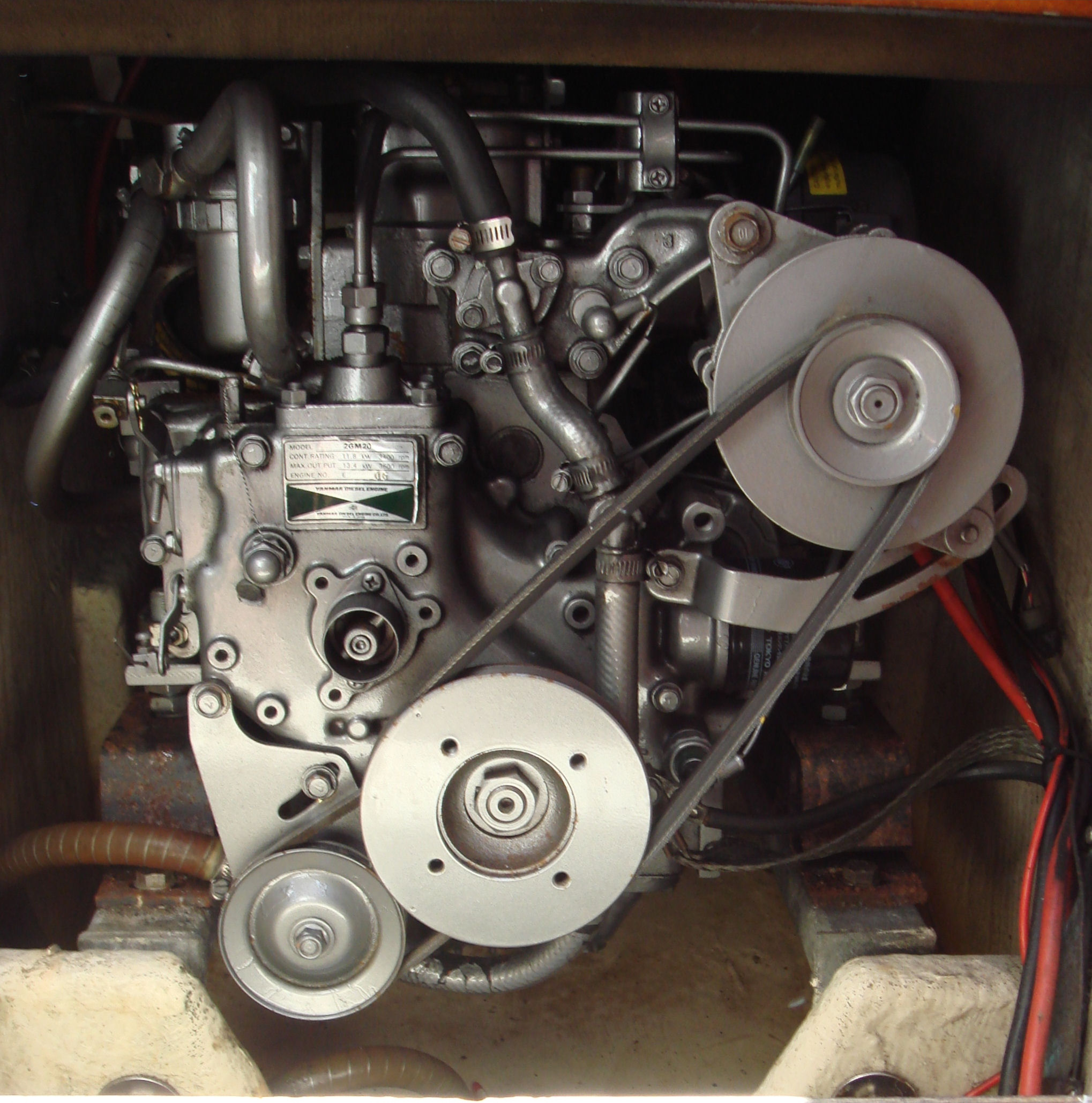Inboard on:
[Wikipedia]
[Google]
[Amazon]
 An inboard motor is a marine propulsion system for boats. As opposed to an outboard motor where an engine is mounted outside the
An inboard motor is a marine propulsion system for boats. As opposed to an outboard motor where an engine is mounted outside the


 The first marine craft to utilize inboard motors were steam engines going back to 1805 and the ''Clermont'' and the ''
The first marine craft to utilize inboard motors were steam engines going back to 1805 and the ''Clermont'' and the ''
 An inboard motor is a marine propulsion system for boats. As opposed to an outboard motor where an engine is mounted outside the
An inboard motor is a marine propulsion system for boats. As opposed to an outboard motor where an engine is mounted outside the hull
Hull may refer to:
Structures
* Chassis, of an armored fighting vehicle
* Fuselage, of an aircraft
* Hull (botany), the outer covering of seeds
* Hull (watercraft), the body or frame of a ship
* Submarine hull
Mathematics
* Affine hull, in affi ...
of the craft, an ''inboard motor'' is an engine enclosed within the hull
Hull may refer to:
Structures
* Chassis, of an armored fighting vehicle
* Fuselage, of an aircraft
* Hull (botany), the outer covering of seeds
* Hull (watercraft), the body or frame of a ship
* Submarine hull
Mathematics
* Affine hull, in affi ...
of the boat, usually connected to a propulsion screw by a
driveshaft.
In international shipping the marine diesel engines are the largest most powerful engines ever produced.
History
 The first marine craft to utilize inboard motors were steam engines going back to 1805 and the ''Clermont'' and the ''
The first marine craft to utilize inboard motors were steam engines going back to 1805 and the ''Clermont'' and the ''Charlotte Dundas
''Charlotte Dundas'' is regarded as the world's second successful steamboat, the first towing steamboat and the boat that demonstrated the practicality of steam power for ships.Fry, p. 27.
Early experiments
Development of experimental steam engi ...
''. Harbour tugs, and small steam launches had
inboard steam engines. In the 1880s the naphtha engine made its appearance and a few boat engines appeared. Such engines had low power and high fuel consumption. The gasoline (petrol) engine pioneer Gottlieb Daimler and Maybach built a four-cycle boat engine and tested it in 1887 on the Neckar River. Sintz in America built several commercially available engines from 1893.
Sizes
Inboard motors may be of several types, suitable for the size of craft they are fitted to. Boats can use one cylinder to v12 engines, depending if they are used for racing or trolling.Small craft
For pleasure craft, such as sailboats and speedboats, diesel, gasoline and electric engines are used. Many inboard motors are derivatives of automobile engines, known asmarine automobile engine
Marine automobile engines are types of automobile petrol- or diesel engines that have been specifically modified for use in the marine environment. The differences include changes made for the operating in a marine environment, safety, performan ...
s. The advent of the stern drive propulsion leg improved design so that auto engines could easily power boats.
Large craft
For larger craft, including ships, where outboard propulsion would in any case not be suitable, the propulsion system may include many types, such asdiesel
Diesel may refer to:
* Diesel engine, an internal combustion engine where ignition is caused by compression
* Diesel fuel, a liquid fuel used in diesel engines
* Diesel locomotive, a railway locomotive in which the prime mover is a diesel engin ...
, gas turbine, or even fossil-fuel or nuclear-generated steam. Some early models used coal for steam-driven ships.
The largest engines in the world are marine diesel engines used to power supertankers and container ships. E.g. the Wärtsilä RT-flex96C produces 109,000 horsepower, weighs 2,300 tons, stands 44-feet tall, is 90-feet long, and has a maximum of 109 rpm.
Cooling
Some inboard motors are freshwater cooled, while others have a raw water cooling system where water from the lake, river orsea
The sea, connected as the world ocean or simply the ocean, is the body of salty water that covers approximately 71% of the Earth's surface. The word sea is also used to denote second-order sections of the sea, such as the Mediterranean Sea, ...
is pumped by the engine to cool it.
However, as seawater is corrosive, and can damage engine blocks and cylinder heads, some seagoing craft have engines which are indirectly cooled via heat exchanger in a keel cooler A keel cooler is a type of internal combustion engine cooling
Internal combustion engine cooling uses either air or liquid to remove the waste heat from an internal combustion engine. For small or special purpose engines, cooling using air from th ...
. Other engines, notably small single and twin cylinder diesels specifically designed for marine use, use raw seawater for cooling and zinc sacrificial anodes are employed to protect the internal metal castings.
References
{{Reflist Marine engines